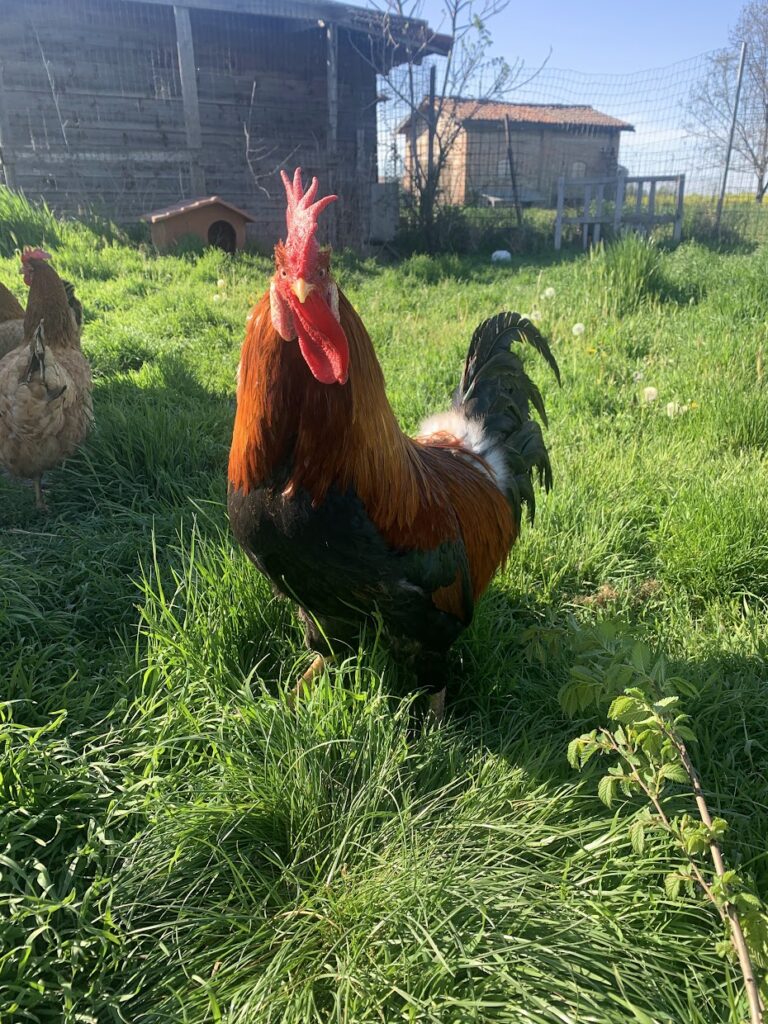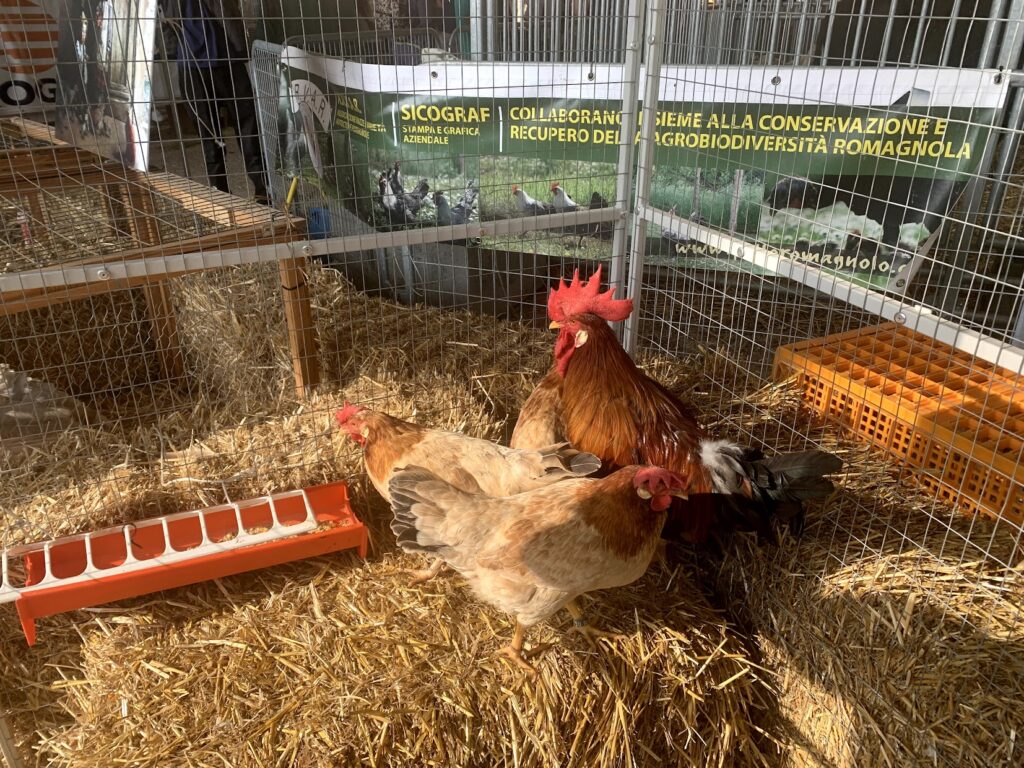
When in 1900 Gaetano Chierici, the recently elected mayor in the lists of the new socialist party, returned exhausted to his home in Reggio Emilia, he probably allowed himself to sink into the cushion of his soft armchair, observing the paintings hanging on the walls of the house, retracing his long past as a painter in his mind. Drinking a glass of acqua d’orcio (“barley water”), he was perhaps contemplating the evolution of his style, dwelling on the realist and hyperkinetic subjects of his last genre period. Here, amidst leggy kids and amusing moments of rural life immortalized on canvas, the wild golden wheat livery of the Modenese hen stood out.
These paintings allowed the keeper breeders of Modena and neighboring provinces decades later to have a common point of reference to identify the breed par excellence of the chicken of Emilia. These are the same paintings that a few decades later would debunk the thesis that the Modenese hen is actually a new cross between the Padovana and Livorno Bianca e Dorata breeds.
Like all native Mediterranean breeds of that period, the Modenese hen is a hen of Indian origin, with its white earlobes and even whiter eggs. That evolutive trunk of Roman and Phoenician origins from which all native Mediterranean breeds derive.

With the arrival of the great post-war Atlanticist revolution, native breeds (and not just poultry) began to disappear. The Modenese hen became almost extinct. Almost. In a courtyard in Nonantola, in the province of Modena, the Modenese was alive and well. And she enjoyed excellent company.
Perhaps Giuliano Serafini’s grandmother had never seen Chierici’s paintings. She was in charge of the household, making ends meet, and looking after the family henhouse. Perhaps unwittingly, however, she saved the whole race from oblivion.
What this woman knew was that these were the hens of her land and that it was important to look after them. From this small initial nucleus, year after year, interest in this breed with its old-fashioned characteristics grew. An interest that remains alive due to the tenacity of a few breeders, despite several timid attempts at recovery by associations and institutions that have evidently never really believed in it, or that perhaps have more interest in doing photo shoots when the moment is propitious than in guaranteeing these breeds a sustainable life.
Modeneses, as mentioned, are very rustic, very energic. If you don’t have a strong hand and don’t know how to handle them, you find them on the roof and in the trees, mind the words of the writer who has got to know them first hand. They rage like mad. Independent in character, and frugal, they do not need special feeds or supplements. If you treat them well they live at least ten years. Giuliano brings the testimony of a hen that reached twenty-two years of age.
Modenese eggs are small, white-shelled, all yolk. Their meat is tough and yellow fat, with a very thin skin that makes the cockerels a sight for the palate. And I won’t comment on the capons *drool*.
The Cornucopia recipe for Modenese hen is a homage to the countryside of Reggio Emilia in the 19th century, which inspired the great artist Chierici. I think it is appropriate to talk about a little-known dish from the agricultural table of Reggio Emilia, a little-known dish but still alive and true, like the Modenese hen: al ris cun la tevdura.
Al Ris Cun La Tevdura e i Ov Ed Mudnesa
- rice, 250 g
- stock, 1 lt
- 🥚 Gallina Modenese eggs, 3
- 🧀 Grana Reggiano… (Calm down, that’s what it was called in those days!), 3 spoonfuls
- Pepper, a pinch
- Salt
Cook the rice in the broth. Beat the egg with the grated Grana Reggiano cheese (possibly from milk of Rossa Reggiana or Bianca Val Padana breeds) and pepper, then quickly add it to the cooked rice so that it becomes a thick, fragrant broth. You have no idea how delicious this dish is…
Traditional Reggiano dish
- Scheda Cornucopia della Gallina Modenese
- Scheda del Ris Con La Tavdura

